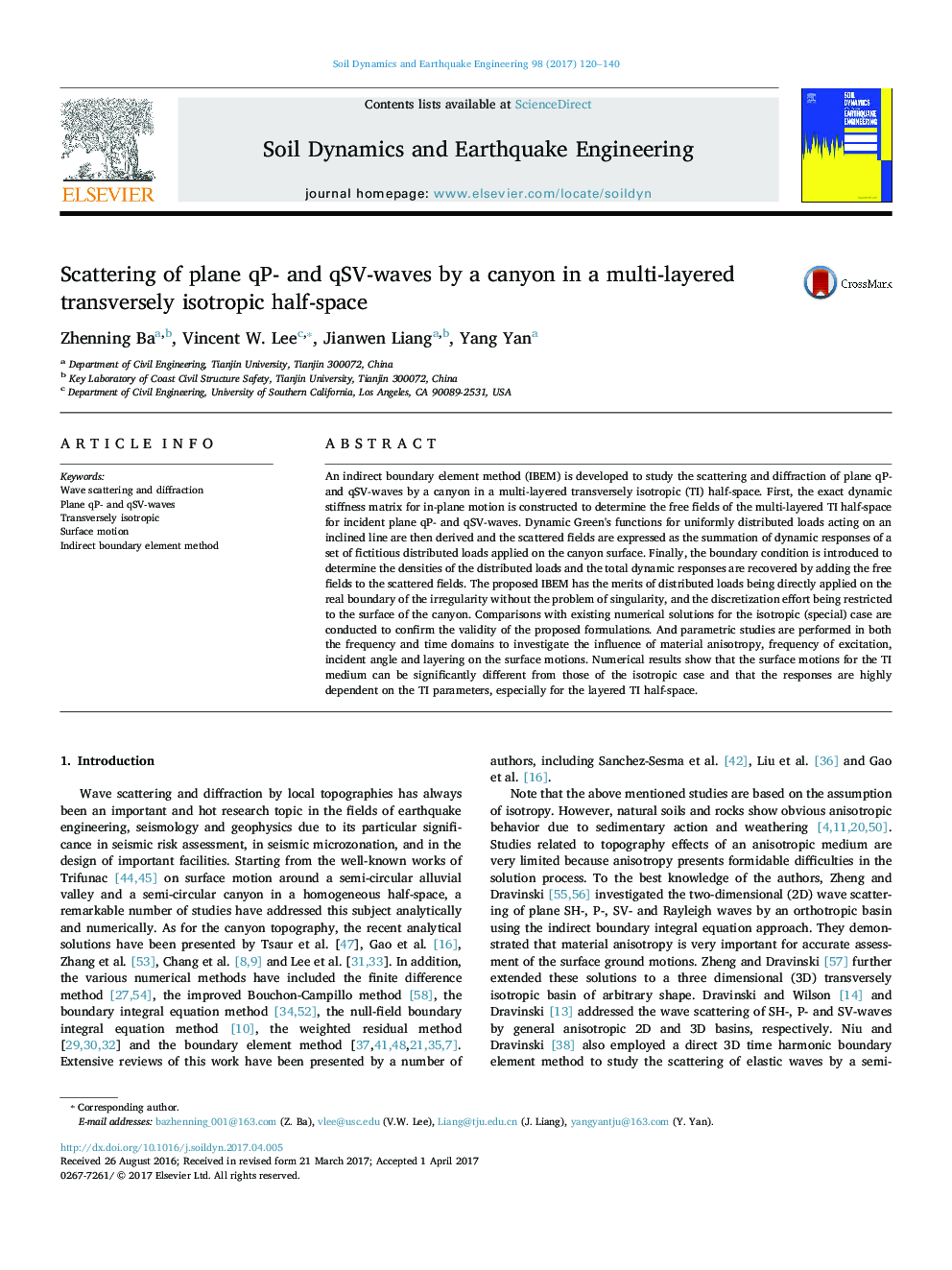| Article ID | Journal | Published Year | Pages | File Type |
|---|---|---|---|---|
| 4927091 | Soil Dynamics and Earthquake Engineering | 2017 | 21 Pages |
Abstract
An indirect boundary element method (IBEM) is developed to study the scattering and diffraction of plane qP- and qSV-waves by a canyon in a multi-layered transversely isotropic (TI) half-space. First, the exact dynamic stiffness matrix for in-plane motion is constructed to determine the free fields of the multi-layered TI half-space for incident plane qP- and qSV-waves. Dynamic Green's functions for uniformly distributed loads acting on an inclined line are then derived and the scattered fields are expressed as the summation of dynamic responses of a set of fictitious distributed loads applied on the canyon surface. Finally, the boundary condition is introduced to determine the densities of the distributed loads and the total dynamic responses are recovered by adding the free fields to the scattered fields. The proposed IBEM has the merits of distributed loads being directly applied on the real boundary of the irregularity without the problem of singularity, and the discretization effort being restricted to the surface of the canyon. Comparisons with existing numerical solutions for the isotropic (special) case are conducted to confirm the validity of the proposed formulations. And parametric studies are performed in both the frequency and time domains to investigate the influence of material anisotropy, frequency of excitation, incident angle and layering on the surface motions. Numerical results show that the surface motions for the TI medium can be significantly different from those of the isotropic case and that the responses are highly dependent on the TI parameters, especially for the layered TI half-space.
Related Topics
Physical Sciences and Engineering
Earth and Planetary Sciences
Geotechnical Engineering and Engineering Geology
Authors
Zhenning Ba, Vincent W. Lee, Jianwen Liang, Yang Yan,
